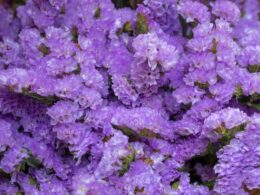Jonquil Flower
The jonquil flower is a type of perennial plant from the Narcissus genus, that is native to Southern Europe. Jonquils are fragrant, small and yellow. They are often used in bouquets and floral arrangements. Although they are often grown as houseplants, jonquils also make excellent cut flowers.
Jonquils: Appearance
The jonquil flower is a small, delicate flower with short, reflexed petals and a long, slender stem. The flowers are typically yellow or white, although some varieties have been bred to produce pink or orange blooms. The jonquil has long, strap-like leaves and a cluster of small, yellow flowers at the tip of each stem. The petals are arranged in a bright and cheery spiral, and the center of the flower is often a deep yellow or orange.
Jonquils are often used in bouquets and arrangements, as their sweet fragrance and beautiful colors add a touch of elegance to any setting.
Daffodil Symbolism
In addition to their decorative value, jonquil flowers also have a long history of symbolism and myth associated with them. For example, the Greek myth of Narcissus tells the story of a young man who fell in love with his own reflection and was turned into a flower as punishment. As such, the jonquil has come to represent beauty, self-love, and vanity.
Narcissus Jonquilla Habitat and Distribution
The jonquil flower is a type of daffodil that is native to Portugal and Spain, although it is naturalized in many regions of Europe (France, Turkey, Italy). It also grows in Canada and the US. They are typically found in soils rich in organic matter, and they often grow in large clusters.
Jonquil Flowers: Blooming Season
The flowers have a sweet fragrance that is often used in perfumes. Jonquils usually bloom in March or April, although the exact timing depends on the climate. In colder regions, they may not bloom until May.
How to Care for Jonquil Flowers?
Jonquil flowers are easy to care for and will reward you with years of reliable blooms. Here are a few tips on how to care for jonquil flowers.
Watering
Although they are relatively easy to care for, jonquils do have specific watering requirements. For best results, water jonquils deeply but infrequently, allowing the soil to dry out somewhat between waterings. Be careful not to overwater, as this can lead to fungal diseases. During hot summer months, it may be necessary to water more often.
Fertilizing
For best results, fertilize jonquils before they bloom in the spring. A balanced 10-10-20 fertilizer is ideal, but you can also use a fertilizer specifically designed for bulbs. Be sure to apply the fertilizer to moist soil and water deeply afterwards. With proper care, your jonquils will reward you with years of beautiful blooms.
Temperature
The ideal temperature for jonquils is between 60 and 65 degrees Fahrenheit for blooming. However, they can tolerate temperatures as low as 50 degrees Fahrenheit, making them one of the hardiest bulbs. In fact, jonquils are often the first flowers to bloom in spring. While they prefer cooler temperatures, jonquils will go dormant in periods of extended cold.
Light Exposure
Although they are fairly tolerant of different light conditions, jonquils prefer full sun or partial shade. If they are grown in too much shade, the plants will become leggy and the flowers will be fewer in number. For best results, plant jonquils in a sunny spot with well-drained soil.
Soil
In order for them to thrive, the soil must be rich in organic matter. This can be achieved by adding compost or manure to the soil before planting. Additionally, the soil should be well-draining to prevent the bulbs from rotting.
How to Grow Jonquil Flowers?
When choosing a spot to plant jonquils, it is important to make sure that the area will not be subject to flooding during the winter months. Jonquils can be planted directly in the ground or in a pot, and they will typically bloom within six to eight weeks after planting. When planting jonquil flowers, it’s important to choose a sunny spot with well-drained soil. Bulbs should be planted about five inches apart and three inches deep. Once they’re in the ground, water them well. The jonquil will flower best if it is planted in a group of at least several bulbs.
Jonquil Flowers: Common Problems
While these flowers are typically hardy, they can sometimes experience problems. Common issues include aphids, thrips, and fungal diseases. Aphids are tiny creatures that feed on plant sap, causing leaves to curl and stunt plant growth. Thrips are small insects that cause damage by feeding on flowers and leaves. Fungal diseases can cause leaves to turn yellow or brown and can cause flowers to rot.
Slugs and Snails
Slugs and snails often feast on the leaves, causing extensive damage. Stem nematodes are tiny parasitic worms that invade the plant’s stem, eventually causing the plant to wilt and die. In addition, jonquil flowers are also susceptible to foliar Nematodes, which feed on the leaves and cause them to turn yellow and die.
However, there are a few ways to protect jonquil flowers from these pests. Gardeners can apply snail bait around the base of the plant, or use nematode-resistant varieties. With a little care, it is possible to enjoy these lovely flowers without fear of damage from pests.



















